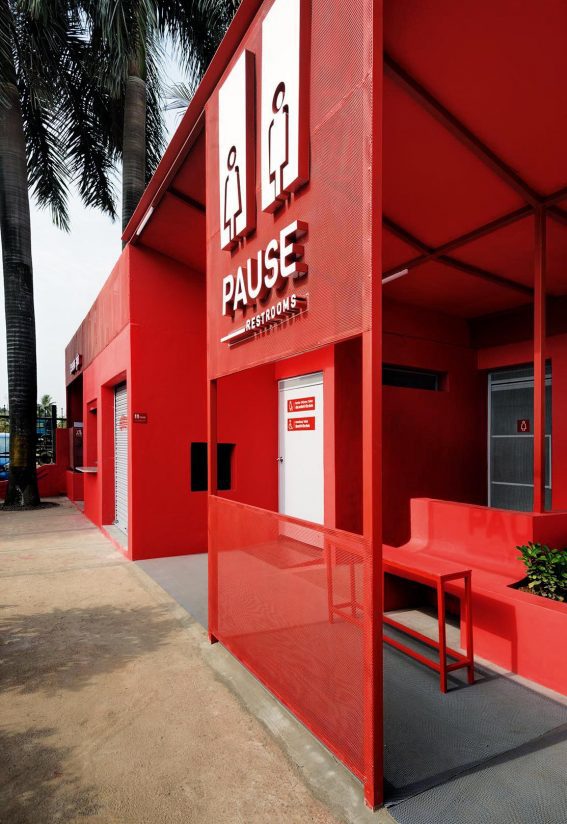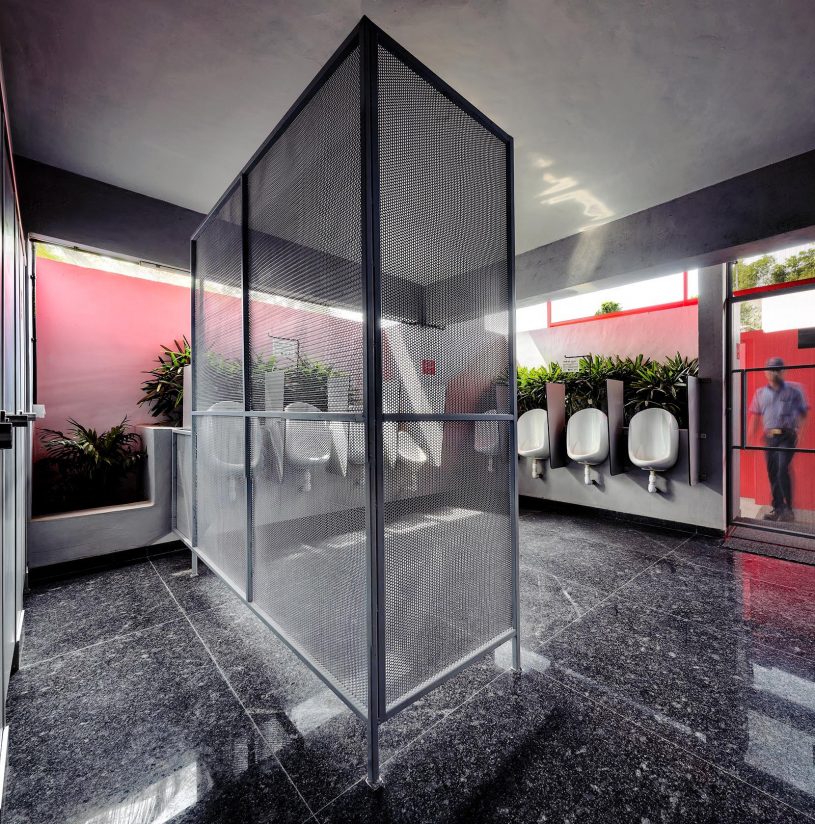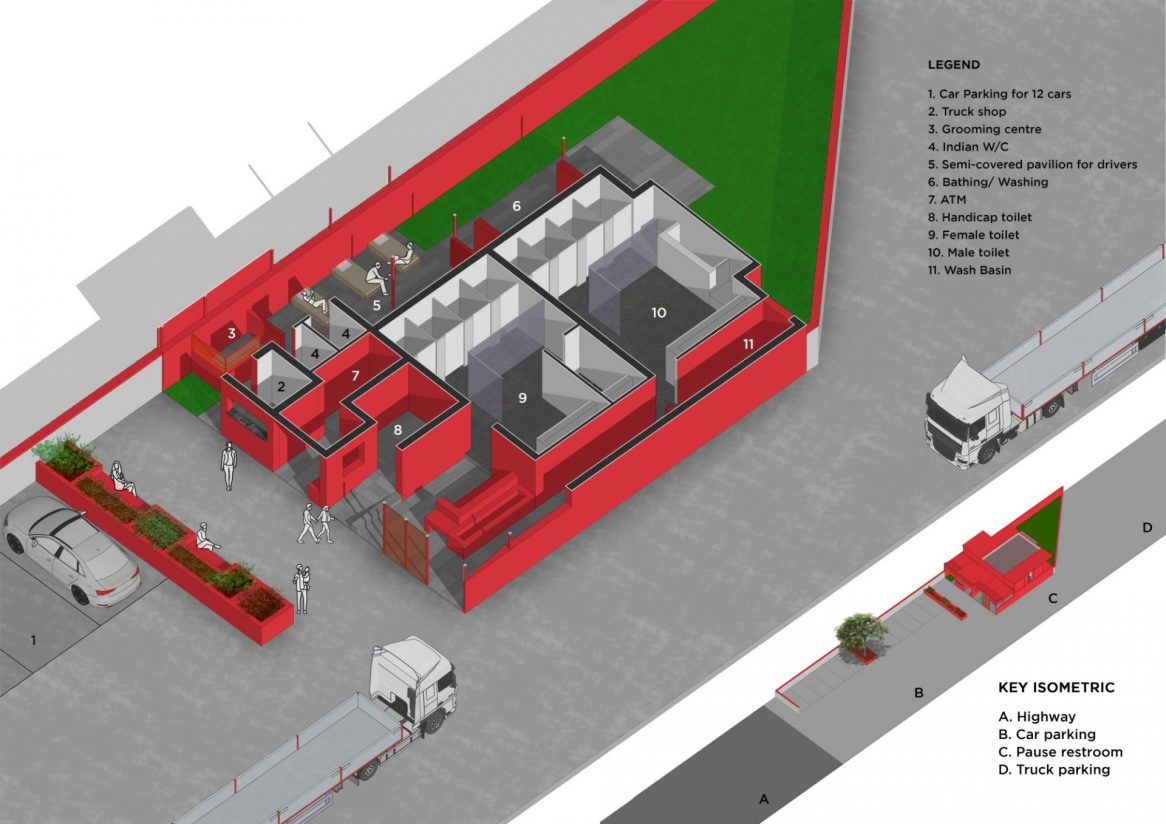A Well Deserved ‘Pause’
Pit stops during long-distance road journeys are a necessity but services for these pit stops are currently lacking in the Indian road network fabric. Architect Rohan Chavan of RC Architects aims to raise awareness of this issue by providing a much-needed opportunity for a ‘pause’ on the busy Mumbai-Goa highway. By Naomi Mathew Vettath
In India, trucks play a vital role in transporting heavy-duty goods, supplying them across cities and states. They form the backbone of India’s trade and transportation industry. But there seems to be a decline in the profession in recent years, largely due to the negligible basic amenities provided for the truck drivers. Throughout the country, the only option to rest for any highway travellers is the roadside dhabas, where sanitation is not usually considered a high priority. This in turn makes the entire road trip experience miserable and unsafe.
Raising voice against this issue, PAUSE restrooms are conceptualised to serve the need of all road travellers, especially truck drivers. Located on the Mumbai-Goa highway adjacent to a gas station, it provides a convenient spot to refuel, eat, unwind and relax during their road trips. It is a multi-faceted complex that hosts all essential services one might need during a long-distance journey.
This complex has several access points for the ease and comfortability of the separate user groups that will use the various facilities. The public toilets for men, women and the differently-abled are carefully designed to allow maximum sunlight and ventilation. The women’s section also includes a nursing station and sanitary napkin dispensing vending machines. Apart from these, there is a zone catering specifically for truck drivers. This zone includes a lounging area, a Suvidha Kendra (convenience centre) with essential banking and transaction facilities, a tuck shop, a hair cutting salon, a pantry and an open space designated for washing and drying clothes.

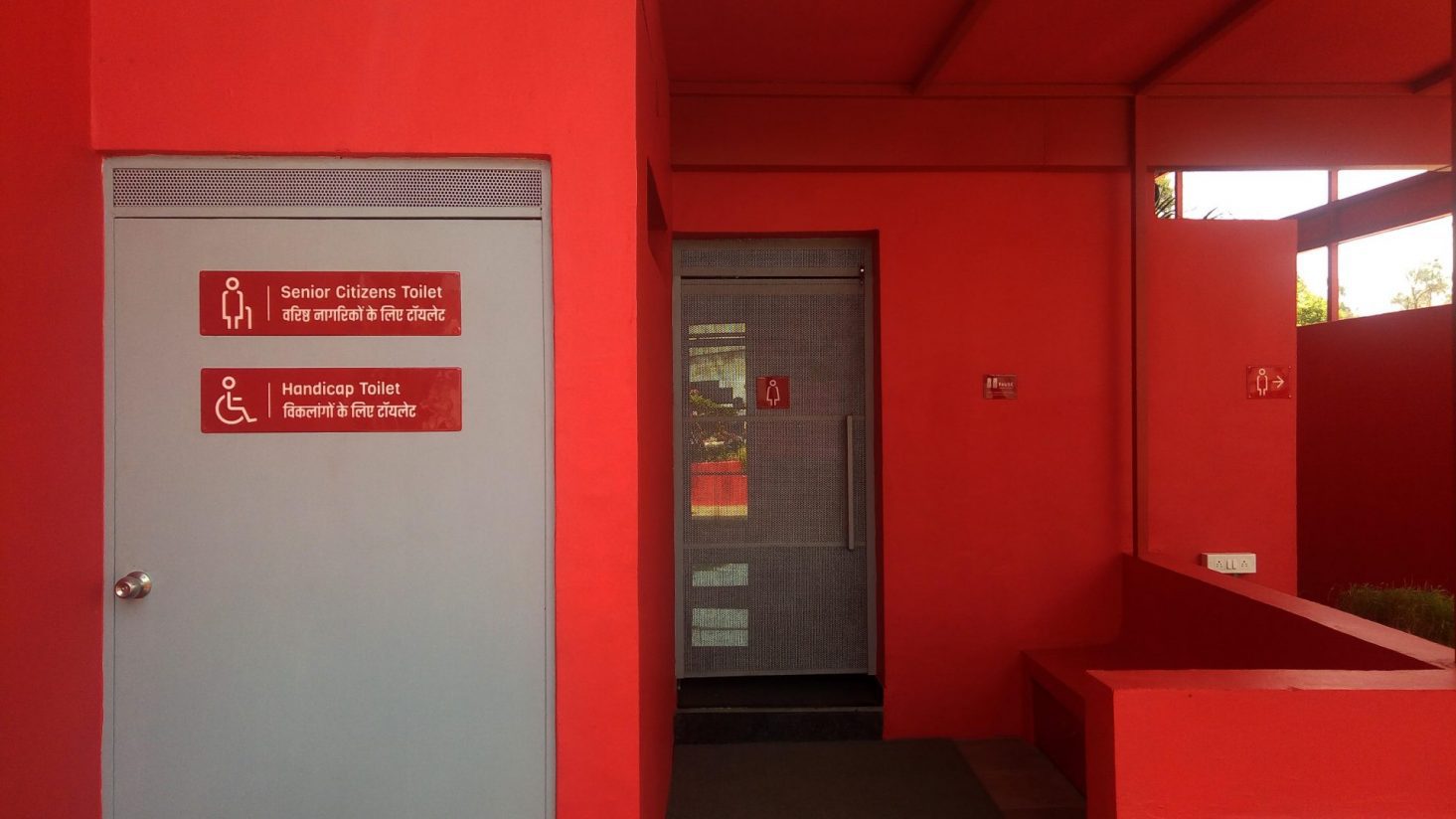 The two basic necessities for a successful public toilet are to be quickly identifiable from a distance and the ability to make its users feel safe. This understanding governed the design of Pause. For ease of identification, Pause is painted in bright red, a colour easily recognizable as a stop sign, and thus allows the travellers to quickly identify its public facilities. Apart from encouraging good hygiene and allowing for faster drying of spaces, ample natural light, and ventilation hint at an honest and safe space, making the users feel comfortable and at ease. Architectural design decisions were made to push the external wall of the building beyond the line of the external beam bringing in sunlight and fresh air into the spaces. These open-to-sky niches are used for planters and light fixtures, livening up the otherwise matter-of-fact space.
The two basic necessities for a successful public toilet are to be quickly identifiable from a distance and the ability to make its users feel safe. This understanding governed the design of Pause. For ease of identification, Pause is painted in bright red, a colour easily recognizable as a stop sign, and thus allows the travellers to quickly identify its public facilities. Apart from encouraging good hygiene and allowing for faster drying of spaces, ample natural light, and ventilation hint at an honest and safe space, making the users feel comfortable and at ease. Architectural design decisions were made to push the external wall of the building beyond the line of the external beam bringing in sunlight and fresh air into the spaces. These open-to-sky niches are used for planters and light fixtures, livening up the otherwise matter-of-fact space.
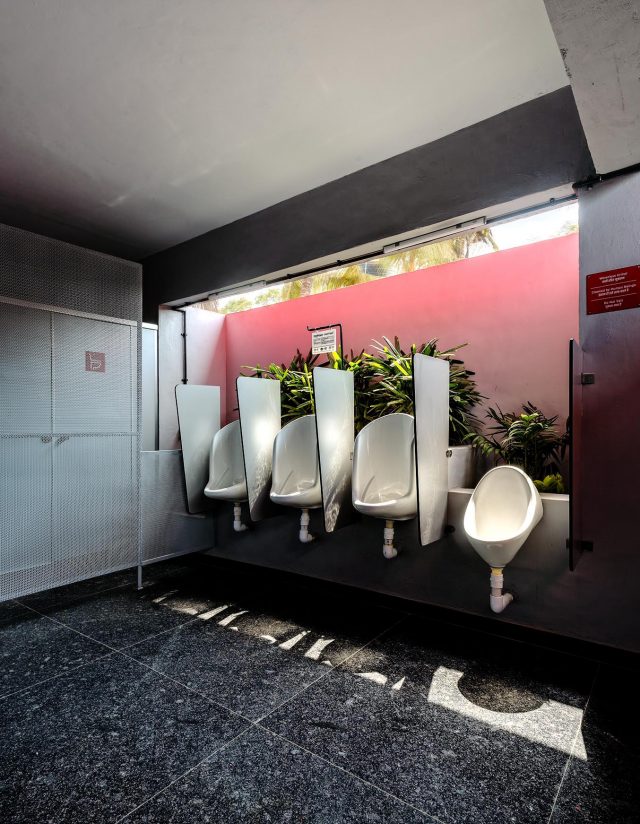 As a public facility, expecting a high footfall, the selection of all materials and fixtures was based on their ease of maintenance and ability to withstand robust use. Straightforward brick and concrete external walls with plastered surfaces and weather shield red paint comprise the main building. The exterior flooring is a combination of polished and rough-finished Kota stone. M.S. box columns and beams holding up Shera board roofing make the verandas serving as circulation spaces and nodes for interaction. Interior walls are painted in weather shield paint to facilitate an easier cleaning process. Large granite slabs minimize flooring joints increasing their durability. The doors to the larger zones are designed in perforated metal to allow for the constant ventilation of the over spaces, while painted solid block boards doors are used for the interior spaces.
As a public facility, expecting a high footfall, the selection of all materials and fixtures was based on their ease of maintenance and ability to withstand robust use. Straightforward brick and concrete external walls with plastered surfaces and weather shield red paint comprise the main building. The exterior flooring is a combination of polished and rough-finished Kota stone. M.S. box columns and beams holding up Shera board roofing make the verandas serving as circulation spaces and nodes for interaction. Interior walls are painted in weather shield paint to facilitate an easier cleaning process. Large granite slabs minimize flooring joints increasing their durability. The doors to the larger zones are designed in perforated metal to allow for the constant ventilation of the over spaces, while painted solid block boards doors are used for the interior spaces.
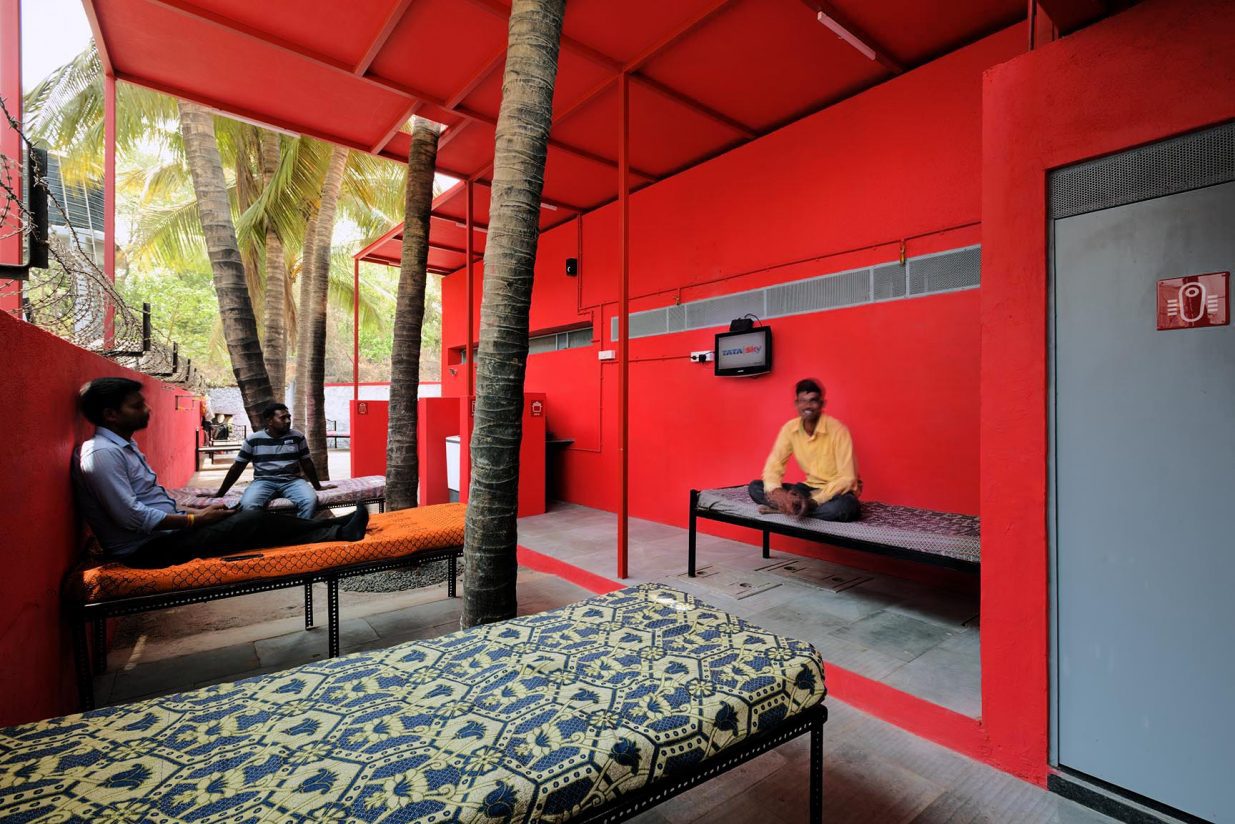
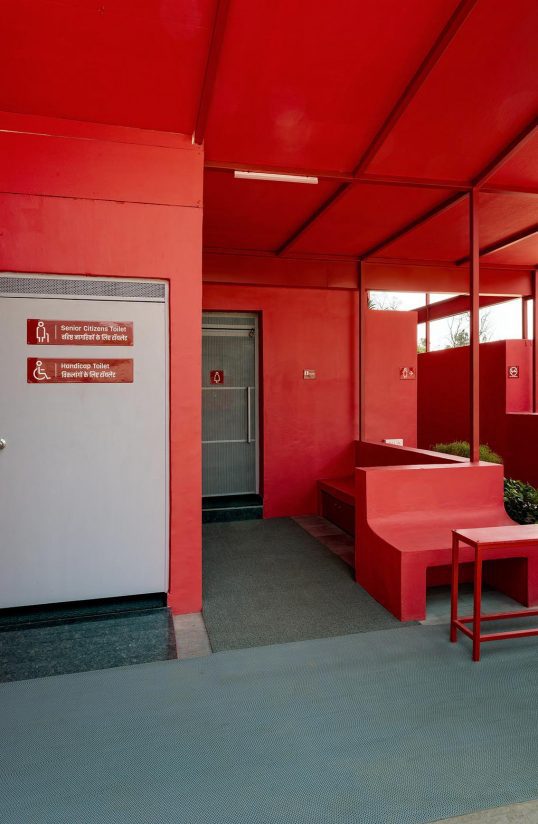 Effective signage and communication design enhance the accessibility to these public utilities. For this purpose, apart from the main entry point, signages for Pause are placed on the highway at a distance of 500m from the location, encouraging potential users to slow down and stop. All signages, including the ones in the individual zones and facility, are designed in two languages – English and Hindi – for the ease of communicating with a broader user group, locals, truck drivers, and other road travellers.
Effective signage and communication design enhance the accessibility to these public utilities. For this purpose, apart from the main entry point, signages for Pause are placed on the highway at a distance of 500m from the location, encouraging potential users to slow down and stop. All signages, including the ones in the individual zones and facility, are designed in two languages – English and Hindi – for the ease of communicating with a broader user group, locals, truck drivers, and other road travellers.
Completed in 2018, the project has been widely accepted and reviewed highly as a much-needed amenity. With the overall built-up area of just 152 sqm., the architect hopes it can be used as a model for similar inserts along various highways, providing frequent ‘pauses’ during long road journeys.
“Space has evolved into a place for communication, hoping for better public infrastructure. In the process, we decided to create Pause as a brand to replicate the prototypes in other locations on the highway,” he says.




